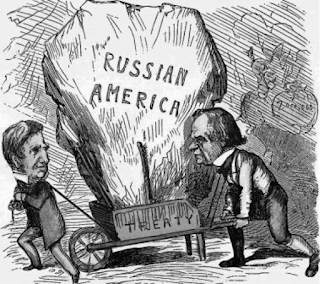The
issue this cartoon is exploring is whether or not the United States was
justified in building the Panama Canal. The United States had sent their navy
to Columbia and a revolution occurred. Then, as a result, the nation of Panama
was born. This cartoon shows America arriving in Panama with swords for force,
and shovels to dig. The ship, which looks a huge elephant, is not going to let
anything get in its way. Roosevelt has arrived and he will get what he needs to
help the United States. The opposing, imperialistic opinion, is that the United
States is justified in building a canal since we need to have access to the
shortest route between the oceans for trading and military purposes. Some
people might also think we belonged there to continue to spread democracy.
The
cartoonist uses exaggeration and symbolism in this political cartoon. Roosevelt’s
body, and the size of the ship, are both exaggerated. They are both almost as
big as the entire country of Panama. This shows how powerful the United States
is. The elephant symbolizes that the republicans have arrived in Panama, and
that they are very interested in getting what they want. This cartoon supports
my anti-imperialism viewpoint because Roosevelt should not have barged into
Panama, armed and ready to get what he wanted. He took something that wasn’t
his for his own selfish reasons. He wanted a shorter route to support our trade
and military. Also, I believe he cheated Columbia out of land that was
rightfully theirs.




